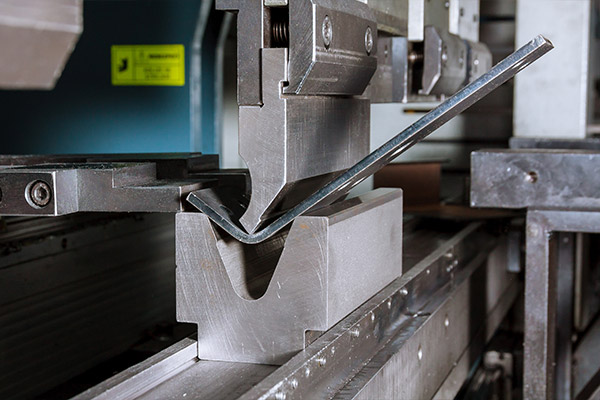Welcome to My Blog! 🌟
Before we dive into the content, I’d love for you to join me on my social media platforms. It’s where I share more insights, engage with our vibrant community, and post regular updates. Here’s how you can stay connected:
📘 Facebook: Connect with me on Facebook
Now, let’s embark on this journey together. I hope you find the content here insightful, engaging, and most importantly, valuable. Let’s explore, learn, and grow together! 🚀
Table of Contents
Introduction
Machining tool steel is a complex process that requires precision, expertise, and a deep understanding of material behavior. Tool steels are known for their hardness and resistance to wear, making them essential in manufacturing high-performance tools and components. However, these same properties also make them challenging to machine. Mistakes in machining tool steel can result in reduced tool life, poor surface finish, increased production costs, and even complete part failure. Understanding these mistakes is crucial to improving machining performance and achieving optimal results.
In this article, we will explore the five most critical mistakes made during the machining of tool steel. We will discuss the causes, consequences, and how to avoid these common errors. This guide is essential for machinists, engineers, and manufacturers looking to enhance their operations and avoid costly setbacks.
Mistake #1: Using Incorrect Cutting Tools for Machining Tool Steel
One of the most critical mistakes when machining tool steel is using the wrong type of cutting tool. Tool steels are tough, hard, and often abrasive, which means not all cutting tools are suited for these materials. Selecting the proper tool is vital for achieving optimal results in terms of performance and tool life.
Why Tool Selection Matters
When choosing a cutting tool, it is essential to select one made from materials that can withstand the high heat and pressure generated during machining. For example, carbide tools are highly preferred when machining tool steels due to their exceptional durability and heat resistance. These tools can handle the increased hardness of tool steels better than other options. On the other hand, high-speed steel (HSS) might suffice for softer materials but is often inadequate for the tougher grades of tool steel.
Signs of Incorrect Tool Use
- Rapid Tool Wear: If the tool is not suited for the material, it will wear down much faster than expected, leading to frequent replacements and downtime.
- Poor Surface Finish: The incorrect tool can leave a rough surface finish on the workpiece, reducing the quality of the final product.
- Excessive Heat Generation: Using an unsuitable tool can cause excessive friction, leading to heat buildup, which further damages both the tool and the workpiece.
- Vibration and Chatter: Incorrect tool selection can result in unstable cutting conditions, leading to vibrations that degrade machining precision.
To avoid these issues, always ensure that the cutting tool material and geometry are matched to the specific grade of tool steel you are machining. Proper tool selection is not just a matter of avoiding damage, but also ensuring that your workpiece is produced to the highest quality standards.
Mistake #2: Incorrect Cutting Speeds and Feeds


Cutting speed and feed rate are crucial variables in machining. Misjudging these values can result in significant operational problems, especially when machining tool steel, a material known for its hardness and toughness. Tool steels vary greatly in terms of hardness, and these variations demand careful adjustments to both cutting speed and feed rates to ensure the best results.
Consequences of Improper Cutting Speeds and Feeds
When the cutting speed and feed rate are not optimized for the material being machined, it can result in various undesirable effects:
- Excessive Tool Wear: Faster-than-optimal cutting speeds can lead to premature tool wear and reduced tool life.
- Surface Damage: Incorrect speeds and feeds can cause the surface of the tool steel to be damaged, resulting in poor finishes and a decrease in the material’s integrity.
- Increased Heat Generation: Incorrect parameters can result in excessive friction, raising the temperature of both the tool and workpiece, leading to potential thermal distortion.
- Lower Dimensional Accuracy: Incorrect machining speeds and feeds can lead to dimensional inaccuracies, which can compromise the final product’s specifications.
Recommended Practices for Cutting Speeds and Feeds
To achieve the best results when machining tool steel, always consult the tool manufacturer’s guidelines and consider performing test cuts. Slower cutting speeds combined with steady, consistent feed rates are generally more effective when machining harder tool steels. Additionally, using coolants is vital to manage the heat generated during the cutting process.
Mistake #3: Neglecting Proper Coolant Application
Coolant plays a vital role in the machining of any metal, but it becomes especially important when machining tool steel. Because tool steel generates high levels of heat during machining, inadequate cooling can quickly degrade both the tool and the workpiece.
Functions of Coolant in Machining Tool Steel
- Reducing heat buildup
- Flushing away chips and debris
- Improving surface finish
- Extending tool life
Coolants must be delivered in the right quantity and at the correct point of contact. Flood cooling is often the most effective for tool steels, although high-pressure coolant systems may be required for more challenging applications.
Common Coolant Errors
- Using the wrong type of coolant
- Applying coolant inconsistently
- Letting coolant reservoirs run dry
- Failing to clean coolant delivery systems
Proper coolant maintenance and application can dramatically improve outcomes in machining tool steel.
Mistake #4: Skipping Pre- and Post-Machining Heat Treatment
Tool steels often require heat treatment to achieve their final mechanical properties. Skipping or improperly performing heat treatment before or after machining can compromise the integrity of the part and lead to failure in application.
Importance of Heat Treatment
Pre-machining heat treatment can soften the steel to make it easier to machine. Post-machining heat treatment is used to harden the part to its final required hardness. Each step is critical and must be tailored to the specific tool steel grade in use.
Common Heat Treatment Oversights
- Not normalizing material before machining
- Improper tempering after machining
- Ignoring residual stress relief
Understanding the required heat treatment steps for the specific tool steel in use is essential to a successful machining operation.
Mistake #5: Inadequate Chip Control in Machining Tool Steel

Proper chip control is often overlooked but is crucial when machining tool steel. Poor chip control can lead to surface damage, tool breakage, and safety hazards.
Chip Control Challenges
Tool steel tends to form tough, stringy chips that can wrap around the tool or part. This can cause interruption in the cutting process and damage the tool or workpiece.
Effective Chip Control Strategies
- Use chip breakers on inserts
- Optimize depth of cut and feed rate
- Use peck drilling or interrupted cuts for deep holes
Chip control should be planned as part of the overall machining strategy rather than as an afterthought.
Common Grades and Their Machining Characteristics
| Tool Steel Grade | Typical Hardness (HRC) | Machinability Rating (1-100) | Common Applications |
|---|---|---|---|
| A2 | 57-62 | 60 | Dies, punches, forming tools |
| D2 | 58-64 | 50 | Cutting tools, blanking dies |
| O1 | 57-63 | 65 | Gauges, knives, machine parts |
| H13 | 48-52 | 55 | Hot work tools, die casting molds |
| S7 | 54-58 | 70 | Impact tools, shear blades |
Understanding the characteristics of the specific tool steel you are machining will help you select the right tools, speeds, feeds, and cooling strategies.
Conclusion
Machining tool steel is not a one-size-fits-all process. Each type of tool steel has unique properties that must be understood and respected. The five critical mistakes discussed—using incorrect cutting tools, improper speeds and feeds, inadequate coolant, skipping heat treatment, and poor chip control—can all lead to significant production issues.
Avoiding these mistakes requires proper planning, regular training, and a commitment to precision. With the right approach, machining tool steel can be performed efficiently, safely, and with excellent results.
FAQ
What is the most machinable tool steel?
O1 tool steel is generally considered one of the most machinable tool steels due to its lower alloy content and good hardness.
Can you machine hardened tool steel?
Yes, but it requires specialized tools such as CBN or ceramic inserts and very precise machining parameters.
Why does machining tool steel generate so much heat?
Tool steels are hard and wear-resistant, which means more energy is required to cut them. This energy is converted into heat.
How do I choose the right cutting tool for machining tool steel?
Select tools based on hardness of the steel, type of operation, and whether you’re doing roughing or finishing. Carbide tools are often a good choice.
Do all tool steels require heat treatment?
Most tool steels do, either before or after machining, to develop the necessary hardness and strength for their final application.

